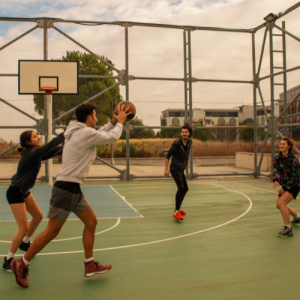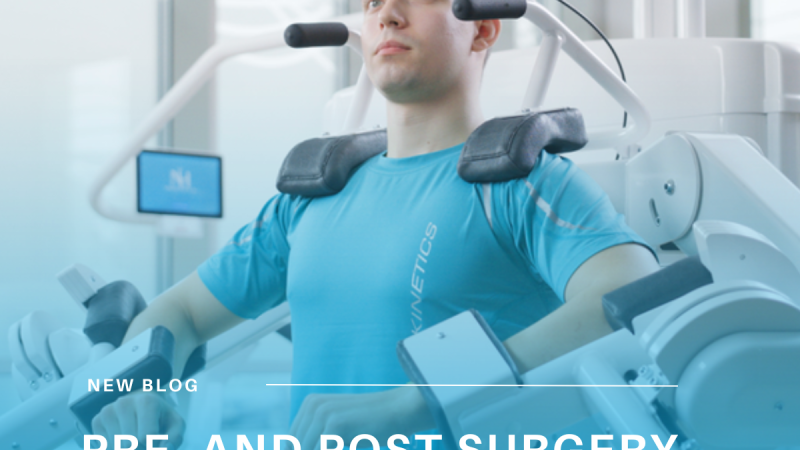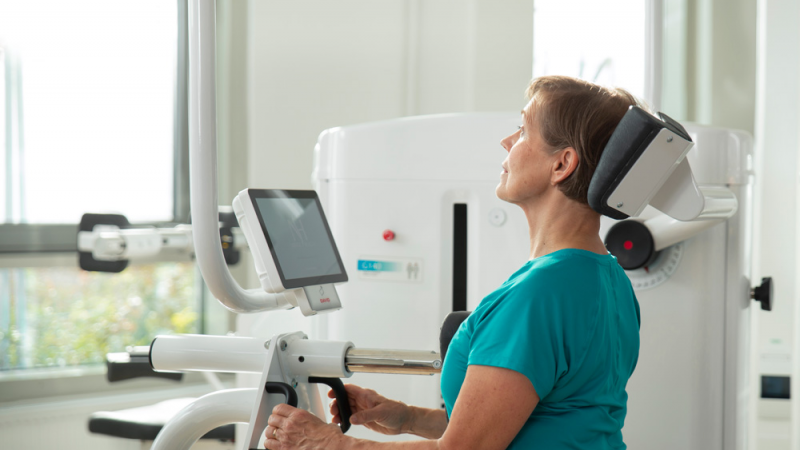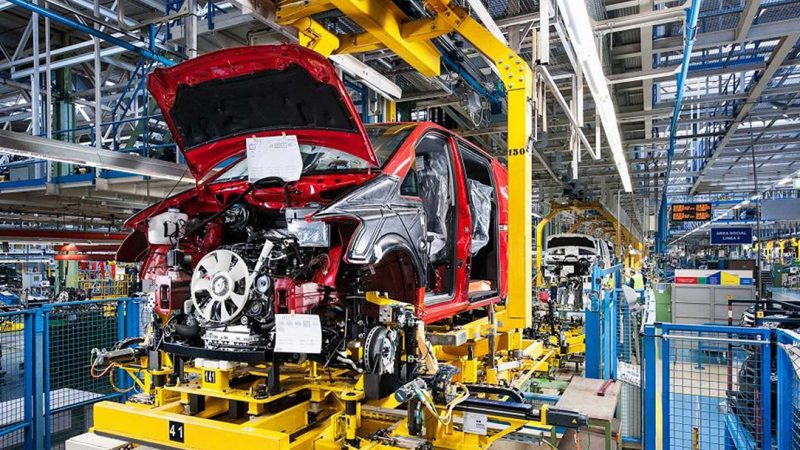Rehabilitation Process with David Technology:
Phase 1: Initial Recovery and Pain Management (Weeks 1-6)
In the early stages post-surgery, the main focus was on managing pain and swelling, restoring knee mobility, and gently activating the muscles surrounding the knee.
Key Therapies and Results:
- David Health Machines: The patient began his rehabilitation using low-resistance exercises on David Health Machines, which helped activate essential muscle groups like the quadriceps, hamstrings, and glutes. These machines are designed to provide a low-impact environment while targeting specific muscle groups around the knee, helping the patient build stability and strength without overloading the joint.
- Cryotherapy and Compression: Used to control swelling and alleviate pain, these treatments helped speed up recovery and increase comfort.
- Ankle Pumps and Quadriceps Sets: Early exercises focused on regaining range of motion and preventing muscle atrophy in the lower leg and knee.
Phase 2: Strengthening and Stabilization (Weeks 6-12)
As pain decreased, the rehabilitation process moved to a focus on strengthening and stabilizing the muscles around the knee.
Key Therapies and Results:
- David Health Machines: The patient progressively increased resistance on the David machines to build strength in the quadriceps, hamstrings, and glutes. This phase also focused on neuromuscular coordination, as the patient learned to activate muscle groups in proper sequence for efficient and coordinated movement.
- Plyometric Training: Exercises like box jumps and squat jumps were introduced to help restore explosive power, a key component of basketball performance.
- Balance Training: Training on unstable surfaces like balance boards and Bosu balls helped improve proprioception and knee stability, which are essential for maintaining control during quick movements in basketball.
- Blaze Pod Drills: Blaze Pod drills were used to enhance reaction time and agility, improving the patient’s ability to respond quickly during high-intensity basketball situations.
Phase 3: Functional Training and Sport-Specific Drills (Weeks 12-24)
As the patient’s strength and stability improved, he transitioned into sport-specific exercises and more dynamic movements.
Key Therapies and Results:
- David Health Machines: The David machines continued to play a critical role, with a focus on building muscle endurance and neuromuscular coordination for more complex movements. These machines helped retrain the nervous system to properly communicate with the muscles during dynamic, basketball-specific actions.
- Plyometric and Agility Drills: Advanced exercises like lateral bounds and depth jumps helped the patient rebuild the explosive power needed for basketball.
- Blaze Pod Drills: The Blaze Pod system was again used for cognitive and physical agility, improving reaction times, decision-making, and overall athletic performance.
- Sport-Specific Drills: The patient began performing basketball drills, including dribbling, passing, and shooting, at a controlled pace to regain confidence in his knee while simulating real-game movements.
Phase 4: Return to Sport Preparation (Months 6-9)
The final phase of rehabilitation focused on preparing the patient to return to competitive basketball, incorporating high-intensity movements and game-like scenarios.
Key Therapies and Results:
- David Health Machines: Continued use of the David Health Machines allowed the patient to maintain strength and endurance while preparing for high-stress, game-like situations. The machine’s feedback helped the patient track his progress and fine-tune his recovery.
- Agility and Speed Training: The patient was pushed through high-intensity drills, such as cutting, sprinting, and jumping, simulating the demands of basketball on the court.
- BlazePod Reaction Drills: BlazePod drills were used at a higher intensity to help the patient sharpen his cognitive response and reaction time during fast breaks, high-pressure moments, and quick cuts.
- Full-Spectrum Basketball Drills: The patient performed full-court drills that incorporated all the movements necessary for a competitive game, including rapid direction changes, shooting, and rebounding.

Results:
- Pain Reduction: The patient experienced an 80-90% reduction in knee pain with no discomfort during basketball drills or high-intensity exercises.
- Improved Strength and Neuromuscular Coordination: Using David Health Machines, the patient regained strength in the quadriceps, hamstrings, and glutes while also improving neuromuscular coordination. This led to better control and efficiency in complex basketball movements.
- Gamified Experience and Testing: The David Health Machines offered a gamified experience by providing detailed feedback on the patient’s progress. The patient performed initial testing to assess strength, stability, and neuromuscular coordination. As the rehabilitation progressed, the patient retested, and the results showed a 60-70% improvement in strength, pain levels, and overall knee function. This improvement was measured through objective data from the machines, giving the patient a clear indication of his recovery.
- Confidence to Return to Basketball: The patient regained his explosive jumping ability, quick cuts, and overall agility, fully preparing him to return to competitive basketball with confidence.
- Improved Agility and Reaction Time: Training with Blaze Pods enhanced the patient’s reaction speed and decision-making on the basketball court, enabling him to respond quickly to game situations.
Why Choose David Technology at Golden Hills Physical Therapy?
The combination of David Health Machines, Blaze Pod drills, and sport-specific training provided the patient with a holistic, data-driven recovery plan. The David Health Machines not only helped rebuild strength but also offered detailed feedback and a gamified experience, making the recovery process both effective and engaging.
At Golden Hills Physical Therapy, we use the most advanced technology to ensure that our athletes recover safely, efficiently, and confidently. Whether you’re recovering from an injury or looking to enhance your athletic performance, we are here to help you reach your goals and return to the sports you love.
Contact us today to start your recovery journey with the support of David Technology and expert care at Golden Hills Physical Therapy! Let us help you get back in the game!
References
- David, C., & Kivimäki, M. (2020). The Effect of Targeted Neuromuscular Training on Strength and Function in ACL Reconstruction Patients. Journal of Sports Rehabilitation, 29(4), 380-387.
- Danneels, L. A., et al. (2015). Targeted Strength Training Using a Machine-Based Approach for Post-Surgical Rehabilitation: An Update. European Spine Journal, 24(2), 253-264.
- Gokeler, A., et al. (2017). Return to Sports After ACL Reconstruction: A Comprehensive Review of Strength, Function, and Sport-Specific Drills. Sports Medicine, 47(6), 1321-1335.
- Foster, C., & Moore, D. (2018). Plyometric Training and its Role in ACL Rehabilitation for Athletes Returning to Sport. Journal of Athletic Training, 53(6), 559-565.
- Gillespie, R., et al. (2019). The Use of Gamified Training and Reaction Time Tools in Rehabilitation for Athletes. International Journal of Sports Science & Coaching, 14(3), 267-275.
- Gabbett, T. J., & McNaughton, L. R. (2012). The Effects of Reaction Time Training on Athletic Performance: A Review. Journal of Sports Science, 30(2), 95-101.
- Myer, G. D., et al. (2014). The Role of Neuromuscular Training in Preventing ACL Injuries: Current Perspectives and Future Directions. Sports Health: A Multidisciplinary Approach, 6(5), 421-427.
- Grassi, A., et al. (2020). Return to Sports After ACL Reconstruction: A Multidisciplinary Approach for Rehabilitation Success. Journal of Orthopaedic & Sports Physical Therapy, 50(3), 163-171.
- Auvinet, E., et al. (2016). Biomechanical Effects of Strengthening Exercises Using the David Machines on Post-Surgery Recovery of ACL Injuries. Journal of Biomechanics, 49(2), 275-281.
- Beaulieu, M., & Desjardins, C. (2018). Functional Recovery After ACL Reconstruction Using Machine-Based Rehabilitation: A Case Study Analysis. Clinical Rehabilitation, 32(9), 1203-1210.
- Pullen, L., et al. (2019). Technology-Driven Rehabilitation: The Role of Interactive Devices in Post-ACL Rehabilitation Programs. Journal of Orthopaedic & Sports Physical Therapy, 49(5), 315-324.
Bastiaan Meijer
 English
English 
























